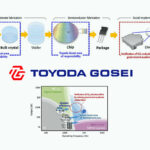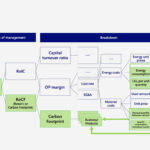ASIA ELECTRONICS INDUSTRYYOUR WINDOW TO SMART MANUFACTURING
New Technique Reduces CO2 in IC Materials Manufacturing
Taiyo Nippon Sanso Corporation has recently developed an inorganic powder melting and spheroidizing technology that contributes to carbon neutrality in the semiconductor materials manufacturing process. Specifically, the technology combines the CERAMELT® powder melting and spheroidizing system, which uses pure oxygen combustion, with hydrogen combustion technology.
Taiyo Nippon Sanso is a Japanese industrial gas company within the Nippon Sanso Holdings Group.
Spherical particles are used as resin fillers for semiconductor sealant. Specifically, they contribute significantly to increasing the performance and miniaturization of semiconductors. Meanwhile, manufacturers adopt CERAMELT® in the manufacturing of spherical particles such as spherical silica. It is characterized by melting and spheroidizing powder by passing the raw material particles through a high-temperature flame using oxygen combustion.
Reduces CO2 in Manufacturing Process
Recently, there is an expanding use of semiconductors. Accordingly, the demand for the reduction of the environmental impact of the manufacturing process increases. Therefore, TNSC developed a powder melting and spheroidizing technology using hydrogen-pure oxygen combustion to solve this challenge.

Mainly, CERAMELT® conventionally uses fossil fuels such as propane as fuel, and thus contained CO2 in the exhaust gas. Also, this technology uses hydrogen as fuel, thus reducing CO2 emissions in the exhaust gas to zero. This greatly contributes to the reduction of environmental impact. At the same time, it maintains the same performance as conventional fossil fuels for melting and spheroidizing the raw material particles. In addition, carbon impurities in products are lower since no carbon source is supplied to CERAMELT®. Thus, this contributes to the manufacturing of high-quality spherical particles.
The company will strive to work together with its customers to implement this technology in the future.




